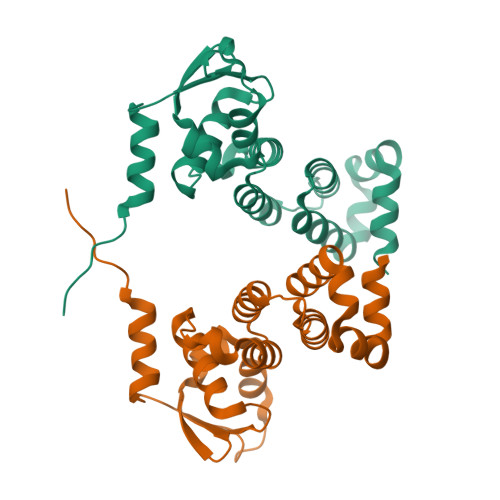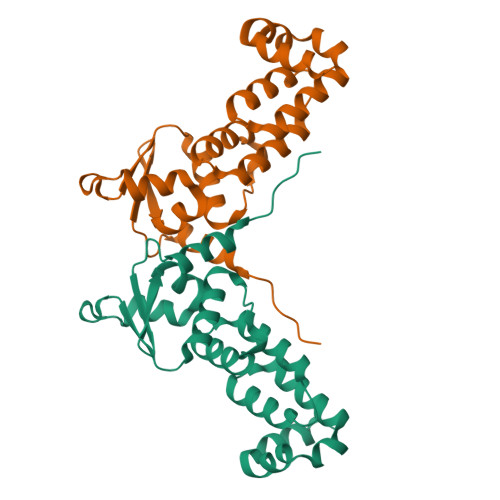Structural basis of high-order oligomerization of the cullin-3 adaptor SPOP
Geersdaele, L.K., Stead, M.A., Harrison, C.M., Carr, S.B., Close, H.J., Rosbrook, G.O., Connell, S.D., Wright, S.C.(2013) Acta Crystallogr D Biol Crystallogr 69: 1677-1684
- PubMed: 23999291
- DOI: https://doi.org/10.1107/S0907444913012687
- Primary Citation of Related Structures:
4HS2, 4J8Z - PubMed Abstract:
Protein ubiquitination in eukaryotic cells is mediated by diverse E3 ligase enzymes that each target specific substrates. The cullin E3 ligase complexes are the most abundant class of E3 ligases; they contain various cullin components that serve as scaffolds for interaction with substrate-recruiting adaptor proteins. SPOP is a BTB-domain adaptor of the cullin-3 E3 ligase complexes; it selectively recruits substrates via its N-terminal MATH domain, whereas its BTB domain mediates dimerization and interactions with cullin-3. It has recently been recognized that the high-order oligomerization of SPOP enhances the ubiquitination of substrates. Here, a dimerization interface in the SPOP C-terminus is identified and it is shown that the dimerization interfaces of the BTB domain and of the C-terminus act independently and in tandem to generate high-order SPOP oligomers. The crystal structure of the dimeric SPOP C-terminal domain is reported at 1.5 Å resolution and it is shown that Tyr353 plays a critical role in high-order oligomerization. A model of the high-order SPOP oligomer is presented that depicts a helical organization that could enhance the efficiency of substrate ubiquitination.
Organizational Affiliation:
School of Biology, University of Leeds, Leeds LS2 9JT, England.

















